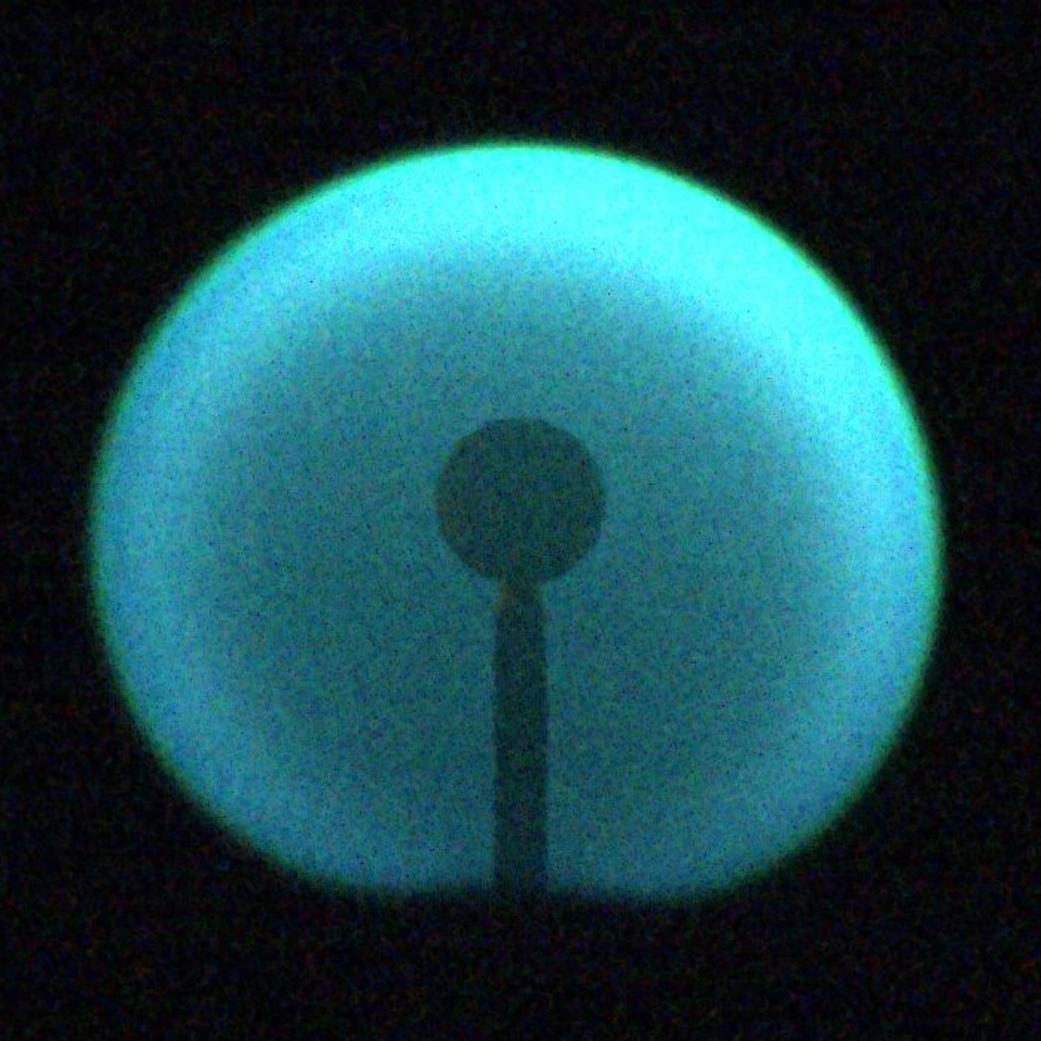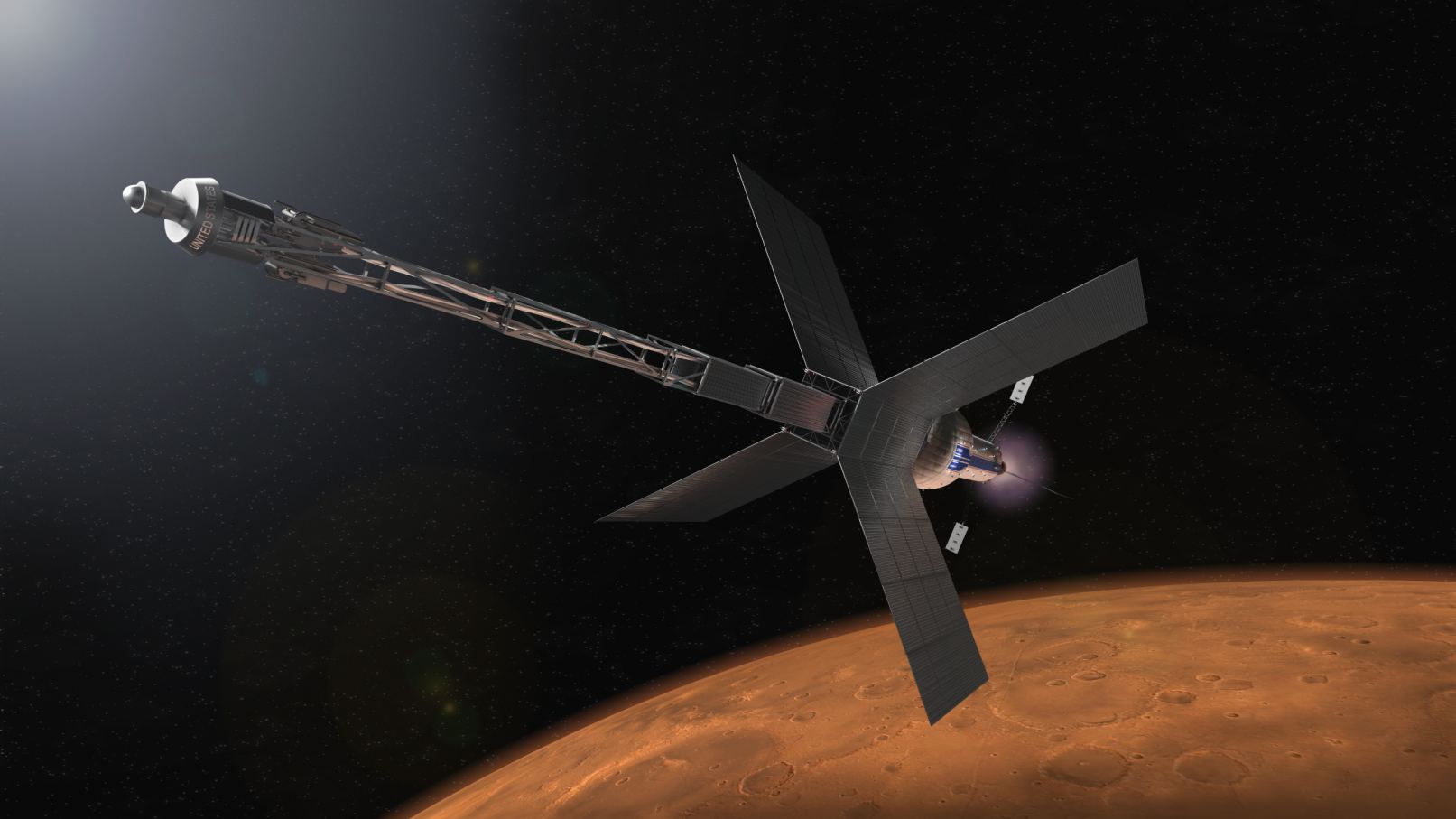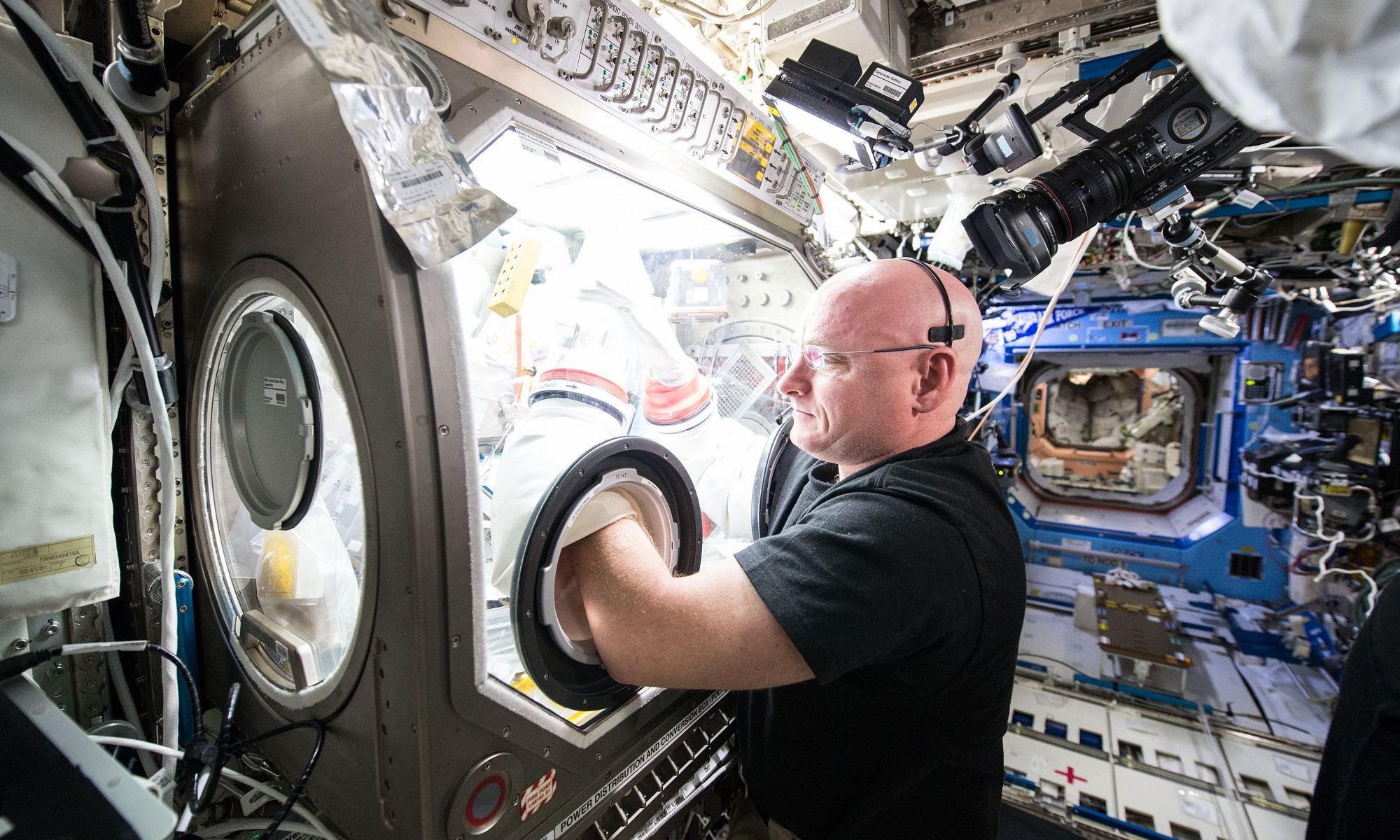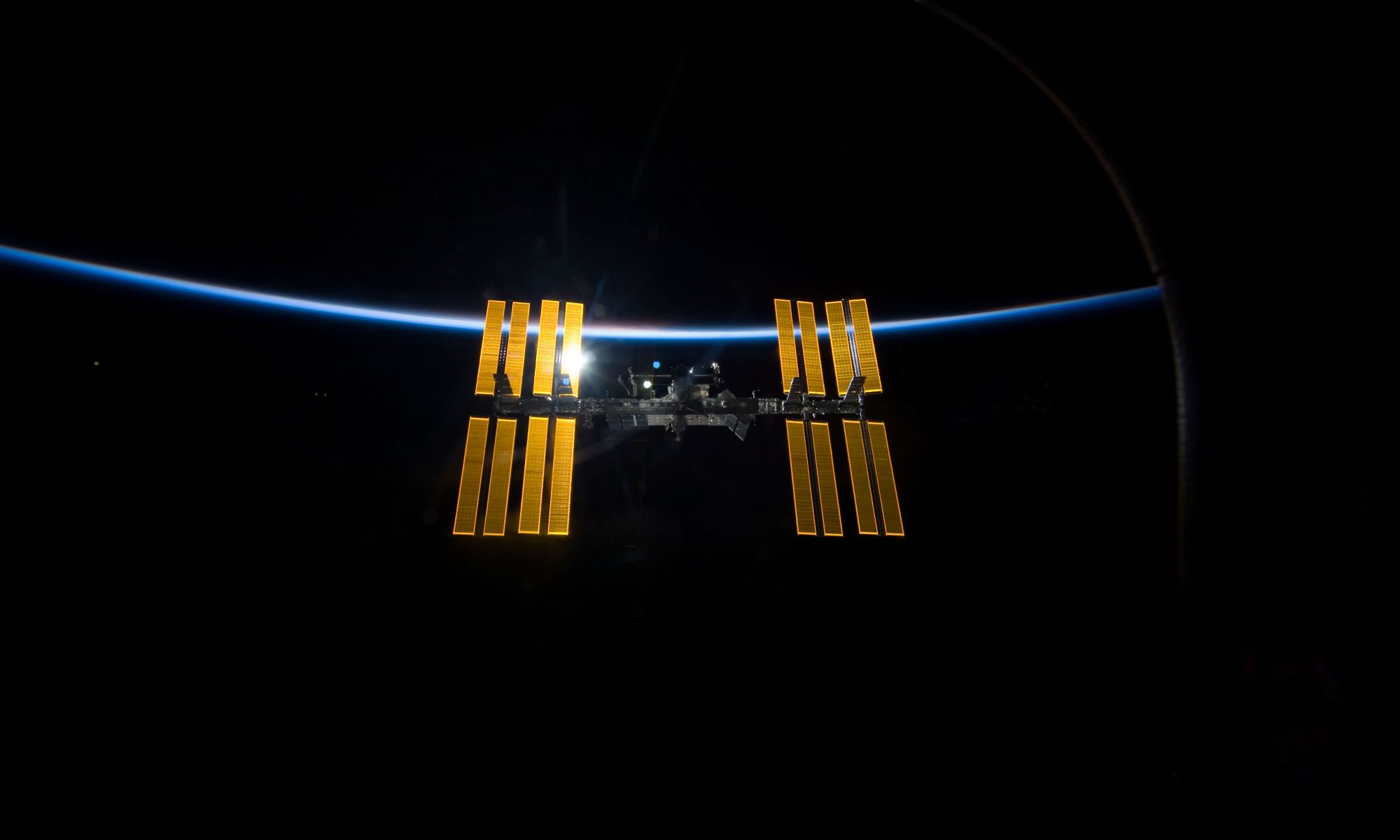Ever since childhood, we were all told to never play with fire. Despite it being relevant to our everyday lives, to include heating our homes and water, cooking our food, producing electricity, and more, fire is extremely dangerous. We were all indoctrinated more with how to put out fires instead of how to start one. We’ve all been told about its destructive properties if mishandled, and that fire needs to be controlled. One of the perks of adulthood, and especially being a scientist, is you get paid to play with fire. Despite fire’s complexities, there’s still a lot we don’t know about its behavior. With more and more of humanity traveling to space and living in microgravity, it’s important to learn about how fire behaves in this unique environment to better prepare ourselves for worst case scenarios. But what if we could also control fire so it’s not as dangerous and less destructive to the environment back here on Earth?
Continue reading “Fire Acts Strangely in Microgravity. Astronauts Have Lit More Than 1,500 Fires on the Space Station to Figure Out Why”Magnetic Chamber can Simulate Microgravity (or Mars Gravity) Here on Earth
There are plenty of processes that might be easier in lower gravity. So far, the biggest hindrance to developing those processes has been the expense of launching equipment to the low gravity environments of the ISS or other space-based research stations. Testing on the ground would be preferable both for ease of use and much lower cost, but the Earth’s gravity usually puts a stop to that. Some scientists see another way. Using magnetic fields can artificially simulate a zero-gravity environment, and now a team from Florida State University’s (FSU’s) National High Magnetic Field Laboratory has developed a system that can hold a much larger sample than previous iterations.
Continue reading “Magnetic Chamber can Simulate Microgravity (or Mars Gravity) Here on Earth”Every Challenge Astronauts Will Face on a Flight to Mars
In 1972, the Space Race officially ended as NASA sent one last crew of astronauts to the surface of the Moon (Apollo 17). This was the brass ring that both the US and the Soviets were reaching for, the “Moonshot” that would determine who had supremacy in space. In the current age of renewed space exploration, the next great leap will clearly involve sending astronauts to Mars.
This will present many challenges that will need to be addressed in advance, many of which have to do with simply getting the astronauts there in one piece! These challenges were the subject of a presentation made by two Indian researchers at the SciTech Forum 2020, an annual event hosted by the International Academy of Astronautics (IAA), RUDN University, and the American Astronomical Society (AAS).
Continue reading “Every Challenge Astronauts Will Face on a Flight to Mars”Health Issues From Spaceflight Might Originate in the Mitochondria
It’s not easy living and working in space for extended periods of time. As NASA’s Twins Study illustrated, microgravity takes a toll on human physiology, which is followed by a painful transition back to normal gravity (just ask Scott Kelly!) Aside from muscle and bone degeneration, there’s diminished organ function, effects on cardiovascular health, the central nervous system, and “subtle changes” on the genetic level.
Until now, the biggest unanswered question was what the underlying cause of these physical impacts was. But after reviewing all of the data accumulated from decades of research aboard the International Space Station (ISS) – which included the Twins Study and DNA samples taken from dozens of astronauts – an international team of researchers came to the conclusion that mitochondria might be the driving force for these changes.
Continue reading “Health Issues From Spaceflight Might Originate in the Mitochondria”This is Foam, Made in Space
Say hello to Space Foam.
The ESA has a science lab on the International Space Station called Columbus. Inside that lab is the Fluid Science Laboratory, dedicated to studying the behaviour of fluids in microgravity. Currently, that lab is being used to study a substance most of us probably don’t spend much time thinking about: foam.
Continue reading “This is Foam, Made in Space”To Avoid Vision Problems in Space, Astronauts Will Need Some Kind of Artificial Gravity

Ever since astronauts began going to space for extended periods of time, it has been known that long-term exposure to zero-gravity or microgravity comes with its share of health effects. These include muscle atrophy and loss of bone density, but also extend to other areas of the body leading to diminished organ function, circulation, and even genetic changes.
For this reason, numerous studies have been conducted aboard the International Space Station (ISS) to determine the extent of these effects, and what strategies can be used to mitigate them. According to a new study which recently appeared in the International Journal of Molecular Sciences, a team of NASA and JAXA-funded researchers showed how artificial gravity should be a key component of any future long-term plans in space.
7% of Scott Kelly’s Genes Changed After a Year in Space

On March 1st, 2016, American astronaut Scott Kelly returned to Earth after spending a total of 340 days aboard the International Space Station (ISS). As part of NASA’s goal to send astronauts on long-duration space flights to Mars and beyond, this record-setting stay in space was designed to test the limit of human endurance in a microgravity environment.
Also known as the Twin Study, this experiment consisted of Kelly spending nearly a year in space while his identical twin (Mark Kelly) remained on Earth. Since Kelly’s return, the two have been subjected to medical tests to see what long-term effects microgravity has had of Scott’s Kelly’s physique. The final results of this test, which were just released, reveal that Scott has experienced changes at the genetic level.
The study was conducted by NASA’s Human Research Program, and the preliminary findings were released at their Investigator’s Workshop on the week of January 23rd, 2017. According to these findings, Scott Kelly showed indications of inflammation, changes in his telomeres and telomerase (parts of the chromosonal system related to aging), a decrease in bone density and gastrointestinal changes – all of which were expected.
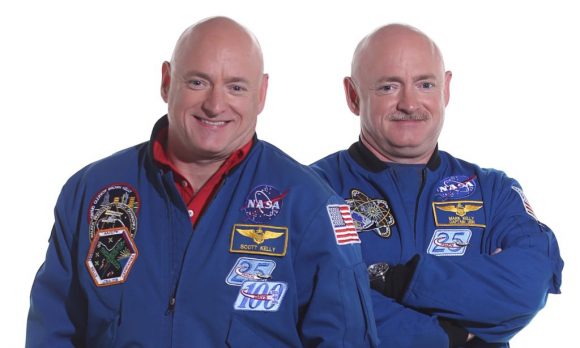
As NASA reported in their preliminary findings:
“By measuring large numbers of metabolites, cytokines, and proteins, researchers learned that spaceflight is associated with oxygen deprivation stress, increased inflammation, and dramatic nutrient shifts that affect gene expression… After returning to Earth, Scott started the process of readapting to Earth’s gravity. Most of the biological changes he experienced in space quickly returned to nearly his preflight status. Some changes returned to baseline within hours or days of landing, while a few persisted after six months.”
At the same time, the study took into account possible genomic and cognitive changes between the two brothers. These findings were recently clarified by NASA, which indicated that 93% of Scott Kelly’s genes returned to normal after he returned to Earth while the remaining 7% points were missing. These were attributed to “longer-term changes in genes related to his immune system, DNA repair, bone formation networks, hypoxia, and hypercapnia.”
In other words, in addition to the well-documented effects of microgravity – such as muscle atrophy, bone density loss and loss of eyesight – Scott Kelly also experienced health effect caused by a deficiency in the amount of oxygen that was able to make it to his tissues, an excess of CO2 in his tissues, and long-term effects in how his body is able to maintain and repair itself.
At the same time, the report indicated that Scott Kelly experienced no significant changes when it came to cognitive performance. The preliminary findings touched on this, indicating that Scott showed a slight decrease in speed and accuracy when undergoing cognitive performance testing compared to his brother. This decrease was more pronounced when he first landed, but was attributed to readjustment to Earth’s gravity.
Mathias Basner – a professor at the University of Pennsylvania, Philadelphia, who was in charge of conducting the tests – also found no real difference in cognition between 6 month and 12 month missions. This is especially important since typical stays aboard the ISS last six months, whereas long term missions to Mars would take 150-300 days – depending on the alignment of the planets and the speed of the spacecraft.
A two way trip to Mars, as well as the time spent in Mars lower-gravity environment (37.6 % that of Earth’s), could take multiple years. As such, the Twin Study was intrinsic to NASA’s efforts to prepare for its proposed “Journey to Mars“, which is expected to take place sometime in the 2030s. These and other studies being conducted aboard the ISS seek to determine what the long-term effects on astronaut health will be, and how they can be mitigated.
The NASA Twin Study was the result of a partnership between 10 individual investigations, 12 colleges and universities, NASA’s biomedical labs and the National Space Biomedical Research Institute Consortium.
Scott Kelly’s stay in space and the Twin Study will also be the subject of a PBS documentary titled “Beyond a Year in Space“. Be sure to check out the teaser trailer here:
Further Reading: MLive
Special Skinsuits Could Help Astronauts Avoid Back Pain When Their Spines Expand In Space
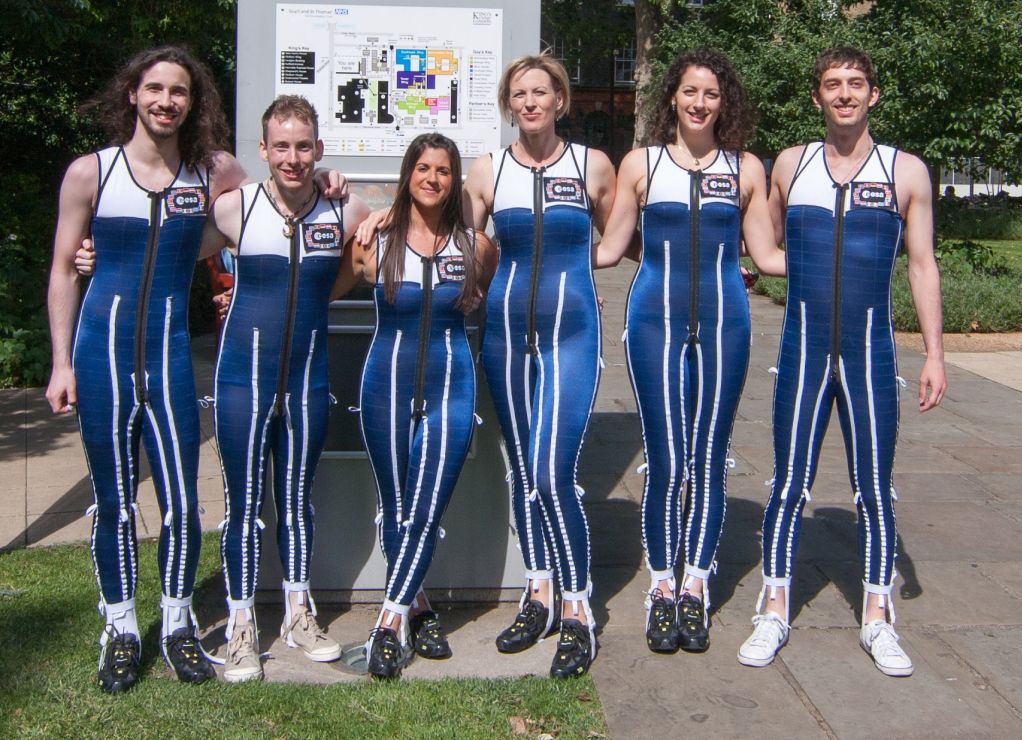
The microgravity in space causes a number of problems for astronauts, including bone density loss and muscle atrophy. But there’s another problem: weightlessness allows astronauts’ spines to expand, making them taller. The height gain is permanent while they’re in space, and causes back pain.
A new SkinSuit being tested in a study at King’s College in London may bring some relief. The study has not been published yet.
The constant 24 hour microgravity that astronauts live with in space is different from the natural 24 hour cycle that humans go through on Earth. Down here, the spine goes through a natural cycle associated with sleep.
Sleeping in a supine position allows the discs in the spine to expand with fluid. When we wake up in the morning, we’re at our tallest. As we go about our day, gravity compresses the spinal discs and we lose about 1.5 cm (0.6 inches) in height. Then we sleep again, and the spine expands again. But in space, astronauts spines have been known to grow up to 7 cm. (2.75 in.)
Study leader David A. Green explains it: “On Earth your spine is compressed by gravity as you’re on your feet, then you go to bed at night and your spine unloads – it’s a normal cyclic process.”
In microgravity, the spine of an astronaut is never compressed by gravity, and stays unloaded. The resulting expansion causes pain. As Green says, “In space there’s no gravitational loading. Thus the discs in your spine may continue to swell, the natural curves of the spine may be reduced and the supporting ligaments and muscles — no longer required to resist gravity – may become loose and weak.”
The SkinSuit being developed by the Space Medicine Office of ESA’s European Astronaut Centre and the King’s College in London is based on work done by the Massachusetts Institute of Technology (MIT). It’s a spandex-based garment that simulates gravity by squeezing the body from the shoulders to the feet.
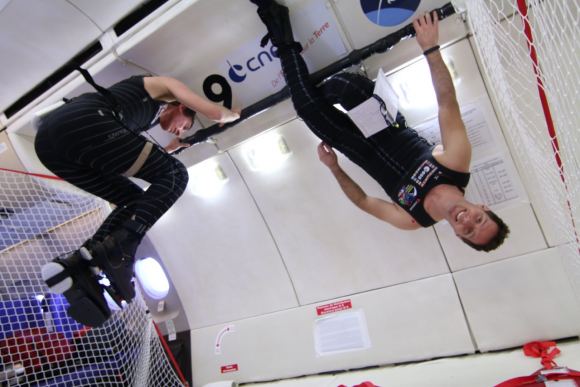
The Skinsuits were tested on-board the International Space Station by ESA astronauts Andreas Mogensen and Thomas Pesquet. But they could only be worn for a short period of time. “The first concepts were really uncomfortable, providing some 80% equivalent gravity loading, and so could only be worn for a couple of hours,” said researcher Philip Carvil.
Back on Earth, the researchers worked on the suit to improve it. They used a waterbed half-filled with water rich in magnesium salts. This re-created the microgravity that astronauts face in space. The researchers were inspired by the Dead Sea, where the high salt content allows swimmers to float on the surface.
“During our longer trials we’ve seen similar increases in stature to those experienced in orbit, which suggests it is a valid representation of microgravity in terms of the effects on the spine,” explains researcher Philip Carvil.
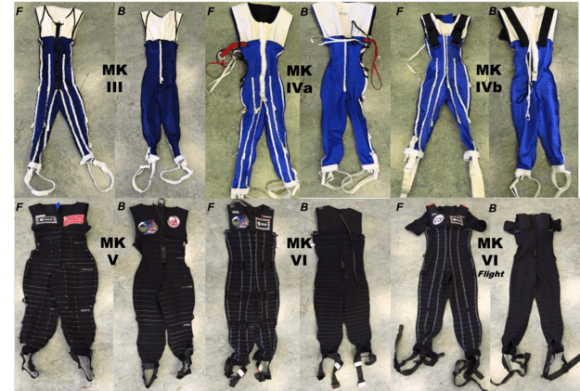
Studies using students as test subjects have helped with the development of the SkinSuit. After lying on the microgravity-simulating waterbed both with and without the SkinSuit, subjects were scanned with MRI’s to test the SkinSuit’s effectiveness. The suit has gone through several design revisions to make it more comfortable, wearable, and effective. It’s now up to the Mark VI design.
“The Mark VI Skinsuit is extremely comfortable, to the point where it can be worn unobtrusively for long periods of normal activity or while sleeping,” say Carvil. “The Mk VI provides around 20% loading – slightly more than lunar gravity, which is enough to bring back forces similar to those that the spine is used to having.”
“The results have yet to be published, but it does look like the Mk VI Skinsuit is effective in mitigating spine lengthening,” says Philip. “In addition we’re learning more about the fundamental physiological processes involved, and the importance of reloading the spine for everyone.”
What is the International Space Station?
After the historic Apollo Missions, which saw humans set foot on another celestial body for the first time in history, NASA and the Russian Space Agency (Roscosmos) began to shift their priorities away from pioneering space exploration and began to focus on developing long-term capabilities in space. In the ensuing decades (from the 1970s to 1990s), both agencies began to build and deploy space stations, each one bigger and more complex than the last.
The latest and greatest of these is the International Space Station (ISS), a scientific facility that resides in Low-Earth Orbit around our planet. This space station is the largest and most sophisticated orbiting research facility ever built and is so large that it can actually be seen with the naked eye. Central to its mission is the idea of fostering international cooperation for the sake of advancing science and space exploration.
Origin:
Planning for the ISS began in the 1980s and was based in part on the successes of Russia’s Mir space station, NASA’s Skylab, and the Space Shuttle Program. This station, it was hoped, would allow for the future utilization of low-Earth Orbit and its resources, and serve as an intermediate base for renewed exploration efforts to the Moon, mission to Mars, and beyond.
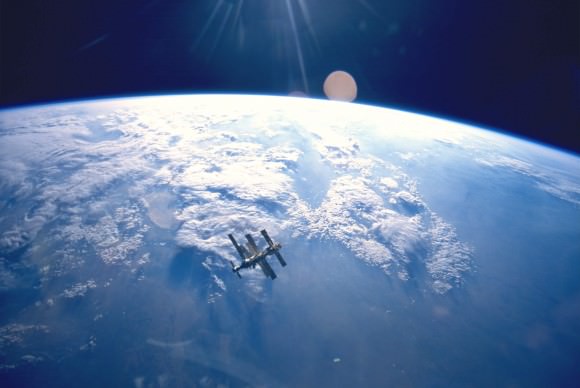
In May of 1982, NASA established the Space Station task force, which was charged with creating a conceptual framework for such a space station. In the end, the ISS plan that emerged was a culmination of several different plans for a space station – which included NASA’s Freedom and the Soviet’s Mir-2 concepts, as well as Japan’s Kibo laboratory, and the European Space Agency’s Columbus laboratory.
The Freedom concept called for a modular space station to be deployed to orbit, where it would serve as the counterpart to the Soviet Salyut and Mir space stations. That same year, NASA approached the Japanese Aerospace and Exploration Agency (JAXA) to participate in the program with the creation of the Kibo, also known as the Japanese Experiment Module.
The Canadian Space Agency was similarly approached in 1982 and was asked to provide robotic support for the station. Thanks to the success of the Canadarm, which was an integral part of the Space Shuttle Program, the CSA agreed to develop robotic components that would assist with docking, perform maintenance, and assist astronauts with spacewalks.
In 1984, the ESA was invited to participate in the construction of the station with the creation of the Columbus laboratory – a research and experimental lab specializing in materials science. The construction of both the Kibo and Columbus modules was approved in 1985. As the most ambitious space program in either agency’s history, the development of these laboratories was seen as central to Europe and Japan’s emerging space capability.
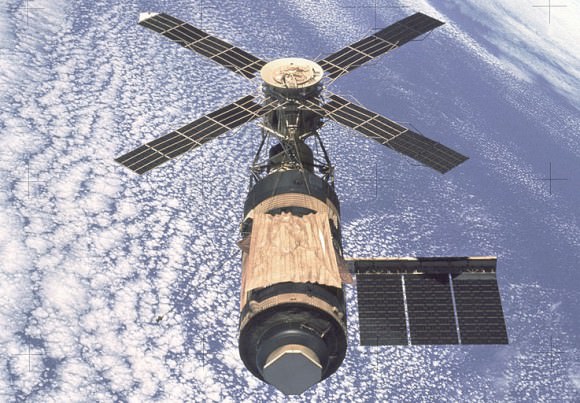
In 1993, American Vice-President Al Gore and Russian Prime Minister Viktor Chernomyrdin announced that they would be pooling the resources intended to create Freedom and Mir-2. Instead of two separate space stations, the programs would be working collaboratively to create a single space station – which was later named the International Space Station.
Construction:
Construction of the ISS was made possible with the support of multiple federal space agencies, which included NASA, Roscosmos, JAXA, the CSA, and members of the ESA – specifically Belgium, Denmark, France, Spain, Italy, Germany, the Netherlands, Norway, Switzerland, and Sweden. The Brazilian Space Agency (AEB) also contributed to the construction effort.
The orbital construction of the space station began in 1998 after the participating nations signed the Space Station Intergovernmental Agreement (IGA), which established a legal framework that stressed cooperation based on international law. The participating space agencies also signed the Four Memoranda of Understandings (MoUs), which laid out their responsibilities in the design, development, and use of the station.
The assembly process began in 1998 with the deployment of the ‘Zarya’ (“Sunrise” in Russian) Control Module, or Functional Cargo Block. Built by the Russians with funding from the US, this module was designed to provide the station’s initial propulsion and power. The pressurized module – which weighed over 19,300 kg (42,600 pounds) – was launched aboard a Russian Proton rocket in November 1998.
On Dec. 4th, the second component – the ‘Unity’ Node – was placed into orbit by the Space Shuttle Endeavour (STS-88), along with two pressurized mating adapters. This node was one of three – Harmony and Tranquility being the other two – that would form the ISS’ main hull. On Sunday, Dec. 6th, it was mated to Zarya by the STS-88 crew inside the shuttle’s payload bay.
The next installments came in the year 2000, with the deployment of the Zvezda Service Module (the first habitation module) and multiple supply missions conducted by the Space Shuttle Atlantis. The Space Shuttle Discovery (STS-92) also delivered the station’s third pressurized mating adapted and a Ku-band antenna in October. By the end of the month, the first Expedition crew was launched aboard a Soyuz rocket, which arrived on Nov. 2nd.
In 2001, the ‘Destiny’ Laboratory Module and the ‘Pirs’ Docking Compartment were delivered. The modular racks that are part of Destiny were also shipped using the Raffaello Multi-Purpose Logistic Modules (MPLM) aboard the Space Shuttle Endeavour and put into place using the Canadarm2 robotic arm. In 2002, additional racks, truss segments, solar arrays, and the Mobile Base System for the Station’s Mobile Servicing System were all delivered.
In 2007, the European Harmony module was installed, which allowed for the addition of the Columbus and Kibo laboratories – both of which were added in 2008. Between 2009 and 2011, construction was finalized with the addition of the Russian Mini-Research Module-1 and -2 (MRM1 and MRM2), the ‘Tranquility’ Node, the Cupola Observation Module, the Leonardo Permanent Multipurpose Module, and the Robonaut 2 technology suite.
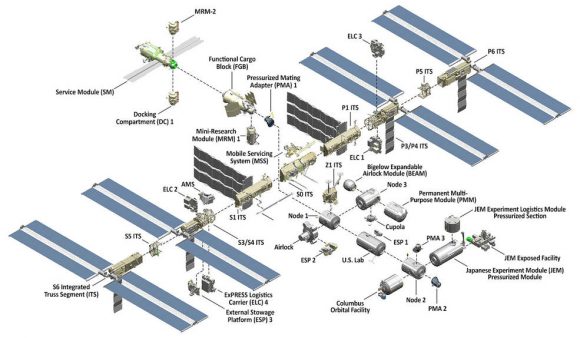
No additional modules or components were added until 2016 when Bigelow Aerospace installed their experimental Bigelow Expandable Activity Module (BEAM). All told, it took 13 years to construct the space station, an estimated $100 billion and required more than 100 rocket and Space Shuttle launches, and 160 spacewalks.
As of the penning of this article, the station has been continuously occupied for a period of 16 years and 74 days since the arrival of Expedition 1 on November 2nd, 2000. This is the longest continuous human presence in low Earth orbit, having surpassed Mir’s record of 9 years and 357 days.
Purpose and Aims:
The main purpose of the ISS is fourfold: conducting scientific research, furthering space exploration, facilitating education and outreach, and fostering international cooperation. These goals are backed by NASA, the Russian Federal Space Agency (Roscomos), the Japanese Aerospace Exploration Agency (JAXA), the Canadian Space Agency (CSA), and the European Space Agency (ESA), with additional support from other nations and institutions.
As far as scientific research goes, the ISS provides a unique environment to conduct experiments under microgravity conditions. Whereas crewed spacecraft provide a limited platform that is only deployed to space for a limited amount of time, the ISS allows for long-term studies that can last for years (or even decades).
Many different and continuous projects are being conducted aboard the ISS, which are made possible with the support of a full-time crew of six astronauts, and a continuity of visiting vehicles (which also allows for resupply and crew rotations). Scientists on Earth have access to their data and are able to communicate with the science teams through a number of channels.
The many fields of research conducted aboard the ISS include astrobiology, astronomy, human research, life sciences, physical sciences, space weather, and meteorology. In the case of space weather and meteorology, the ISS is in a unique position to study these phenomena because of its position in LEO. Here, it has a short orbital period, allowing it to witness weather across the entire globe many times in a single day.
It is also exposed to things like cosmic rays, solar wind, charged subatomic particles, and other phenomena that characterize a space environment. Medical research aboard the ISS is largely focused on the long-term effects of microgravity on living organisms – particularly its effects on bone density, muscle degeneration, and organ function – which is intrinsic to long-range space exploration missions.
The ISS also conducts research that is beneficial to space exploration systems. Its location in LEO also allows for the testing of spacecraft systems that are required for long-range missions. It also provides an environment where astronauts can gain vital experience in terms of operations, maintenance, and repair services – which are similarly crucial for long-term missions (such as missions to the Moon and Mars).
The ISS also provides opportunities for education thanks to participation in experiments, where students are able to design experiments and watch as ISS crews carry them out. ISS astronauts are also able to engage classrooms through video links, radio communications, email, and educational videos/web episodes. Various space agencies also maintain educational materials for download based on ISS experiments and operations.
Educational and cultural outreach also fall within the ISS’ mandate. These activities are conducted with the help and support of the participating federal space agencies and are designed to encourage education and career training in the STEM (Science, Technical, Engineering, Math) fields.
One of the best-known examples of this is the educational videos created by Chris Hadfield – the Canadian astronaut who served as the commander of Expedition 35 aboard the ISS – which chronicled the everyday activities of ISS astronauts. He also directed a great deal of attention to ISS activities thanks to his musical collaboration with the Barenaked Ladies and Wexford Gleeks – titled “I.S.S. (Is Somebody Singing)” (shown above).
His video, a cover of David Bowie’s “Space Oddity”, also earned him widespread acclaim. Along with drawing additional attention to the ISS and its crew operations, it was also a major feat since it was the only music video ever to be filmed in space!
Operations Aboard the ISS:
As noted, the ISS is facilitated by rotating crews and regular launches that transport supplies, experiments, and equipment to the station. These take the form of both crewed and uncrewed vehicles, depending on the nature of the mission. Crews are generally transported aboard Russian Progress spacecraft, which are launched via Soyuz rockets from the Baikonur Cosmodrome in Kazakhstan.
Roscosmos has conducted a total of 60 trips to the ISS using Progress spacecraft, while 40 separate launches were conducted using Soyuz rockets. Some 35 flights were also made to the station using the now-retired NASA Space Shuttles, which transported crew, experiments, and supplies. The ESA and JAXA have both conducted 5 cargo transfer missions, using the Automated Transfer Vehicle (ATV) and the H-II Transfer Vehicle (HTV), respectively.
In more recent years, private aerospace companies like SpaceX and Orbital ATK have been contracted to provide resupply missions to the ISS, which they have done using their Dragon and Cygnus spacecraft. Additional spacecraft, such as SpaceX’s Crew Dragon spacecraft, are expected to provide crew transportation in the future.
Alongside the development of reusable first-stage rockets, these efforts are being carried out in part to restore domestic launch capability to the US. Since 2014, tensions between the Russian Federation and the US have led to growing concerns over the future of Russian-American cooperation with programs like the ISS.
Crew activities consist of conducting experiments and research considered vital to space exploration. These activities are scheduled from 06:00 to 21:30 hours UTC (Universal Coordinated Time), with breaks being taken for breakfast, lunch, dinner, and regular crew conferences. Every crew member has their own quarters (which includes a tethered sleeping bag), two of which are located in the Zvezda Module and four more installed in Harmony.
During “night hours”, the windows are covered to give the impression of darkness. This is essential since the station experiences 16 sunrises and sunsets a day. Two exercise periods of 1 hour each are scheduled every day to ensure that the risks of muscle atrophy and bone loss are minimized. The exercise equipment includes two treadmills, the Advanced Resistive Exercise Device (ARED) for simulated weight training, and a stationary bicycle.
Hygiene is maintained thanks to water jets and soap dispensed from tubes, as well as wet wipes, rinseless shampoo, and edible toothpaste. Sanitation is provided by two space toilets – both of Russian design – aboard the Zvezda and Tranquility Modules. Similar to what was available aboard the Space Shuttle, astronauts fasten themselves to the toilet seat and the removal of waste is accomplished with a vacuum suction hole.
Liquid waste is transferred to the Water Recovery System, where it is converted back into drinking water (yes, astronauts drink their own urine, after a fashion!). Solid waste is collected in individual bags that are stored in an aluminum container, which are then transferred to the docked spacecraft for disposal.
Food aboard the station consists mainly of freeze-dried meals in vacuum-sealed plastic bags. Canned goods are available, but are limited due to their weight (which makes them more expensive to transport). Fresh fruit and vegetables are brought during resupply missions, and a large array of spices and condiments are used to ensure that food is flavorful – which is important since one of the effects of microgravity is a diminished sense of taste.
To prevent spillage, drinks and soups are contained in packets and consumed with a straw. Solid food is eaten with a knife and fork, which are attached to a tray with magnets to prevent them from floating away, while drinks are provided in dehydrated powder form and then mixed with water. Any food or crumbs that floats away must be collected to prevent them from clogging the air filters and other equipment.
Hazards:
Life aboard the station also carries with it a high degree of risk. These come in the form of radiation, the long-term effects of microgravity on the human physique, the psychological effects of being in space (i.e. stress and sleep disturbances), and the danger of collision with space debris.
In terms of radiation, objects within the Low-Earth Orbit environment are partially protected from solar radiation and cosmic rays by the Earth’s magnetosphere. However, without the protection of the Earth’s atmosphere, astronauts are still exposed to about 1 millisievert a day, which is the equivalent of what a person on Earth is exposed to during the course of a year.
As a result, astronauts are at higher risk for developing cancer, suffering DNA and chromosomal damage, and diminished immune system function. Hence why protective shielding and drugs are a must aboard the station, as well as protocols for limiting exposure. For instance, during solar flare activity, crews are able to seek shelter in the more heavily shielded Russian Orbital Segment of the station.
As already noted, the effects of microgravity also take a toll on muscle tissues and bone density. According to a 2001 study conducted by NASA’s Human Research Program (HRP) – which researched the effects on an astronaut Scott Kelly’s body after he spent a year aboard the ISS – bone density loss occurs at a rate of over 1% per month.
Similarly, a report by the Johnson Space Center – titled “Muscle Atrophy” – stated that astronauts experience up to a 20% loss of muscle mass on spaceflights lasting just five to 11 days. In addition, more recent studies have indicated that the long-term effects of being in space also include diminished organ function, decreased metabolism, and reduced eyesight.
Because of this, astronauts exercise regularly in order to minimize muscle and bone loss, and their nutritional regimen is designed to make sure they the appropriate nutrients to maintain proper organ function. Beyond that, the long-term health effects, and additional strategies to combat them, are still being investigated.
But perhaps the greatest hazard comes in the form of orbiting junk – aka. space debris. At present, there are over 500,000 pieces of debris that are being tracked by NASA and other agencies as they orbit the Earth. An estimated 20,000 of these are larger than a softball, while the remainder are about the size of a pebble. All told, there are likely to be many millions of pieces of debris in orbit, but most are so small they can’t be tracked.
These objects can travel at speeds of up to 28,163 km/h (17,500 mph), while the ISS orbits the Earth at a speed of 27,600 km/h (17,200 mph). As a result, a collision with one of these objects could be catastrophic to the ISS. The station is naturally shielded to withstand impacts from tiny bits of debris and well as micro-meteoroids – and this shielding is divided between the Russian Orbital Segment and the US Orbital Segment.
On the USOS, the shielding consists of a thin aluminum sheet that is held apart from the hull. This sheet causes objects to shatter into a cloud, thereby dispersing the kinetic energy of the impact before it reaches the main hull. On the ROS, shielding takes the form of a carbon plastic honeycomb screen, an aluminum honeycomb screen, and glass cloth, all of which are spaced over the hull.
The ROS’ shielding is less likely to be punctured, hence why the crew moves to the ROS whenever a more serious threat presents itself. But when faced with the possibility of an impact from a larger object that is being tracked, the station performs what is known as a Debris Avoidance Manoeuvre (DAM). In this event, the thrusters on the Russian Orbital Segment fire in order to alter the station’s orbital altitude, thus avoiding the debris.
Future of the ISS:
Given its reliance on international cooperation, there have been concerns in recent years – in response to growing tensions between Russia, the United States, and NATO – about the future of the International Space Station. However, for the time being, operations aboard the station are secure, thanks to commitments made by all of the major partners.
In January of 2014, the Obama Administration announced that it would be extending funding for the US portion of the station until 2024. Roscosmos has endorsed this extension but has also voiced approval for a plan that would use elements of the Russian Orbital Segment to construct a new Russian space station.
Known as the Orbital Piloted Assembly and Experiment Complex (OPSEK), the proposed station would serve as an assembly platform for crewed spacecraft traveling to the Moon, Mars, and the outer Solar System. There have also been tentative announcements made by Russian officials about a possible collaborative effort to build a future replacement for the ISS. However, NASA has yet to confirm these plans.
In April of 2015, the Canadian government approved a budget that included funding to ensure the CSA’s participation with the ISS through 2024. In December of 2015, JAXA and NASA announced their plans for a new cooperative framework for the International Space Station (ISS), which included Japan extending its participation until 2024. As of December 2016, the ESA has also committed to extending its mission to 2024.
The ISS represents one of the greatest collaborative and international efforts in history, not to mention one of the greatest scientific undertakings. In addition to providing a location for crucial scientific experiments that cannot be conducted here on Earth, it is also conducting research that will help humanity make its next great leaps in space – i.e. mission to Mars and beyond!
On top of all that, it has been a source of inspiration for countless millions who dream of going to space someday! Who knows what great undertakings the ISS will allow for before it is finally decommissioned – most likely decades from now?
We have written many interesting articles about the ISS here at Universe Today. Here’s International Space Station Achieves 15 Years of Continuous Human Presence in Orbit, Beginner’s Guide to Seeing the International Space Station, Take a Virtual 3-D Spacewalk Outside the International Space Station, International Space Station Viewing, and Space Station Pictures.
For more information, check out the NASA Reference Guide to the ISS and this article about the 10th anniversary of the space station.
Astronomy Cast also has relevant episodes on the subject. Here’s Questions: An Unlocked Moon, Energy Into Black Holes, and the Space Station’s Orbit, and Episode 298: Space Stations, Part 3 – International Space Station.
Sources:
Culprit Found In Blurry Astronaut Vision Mystery
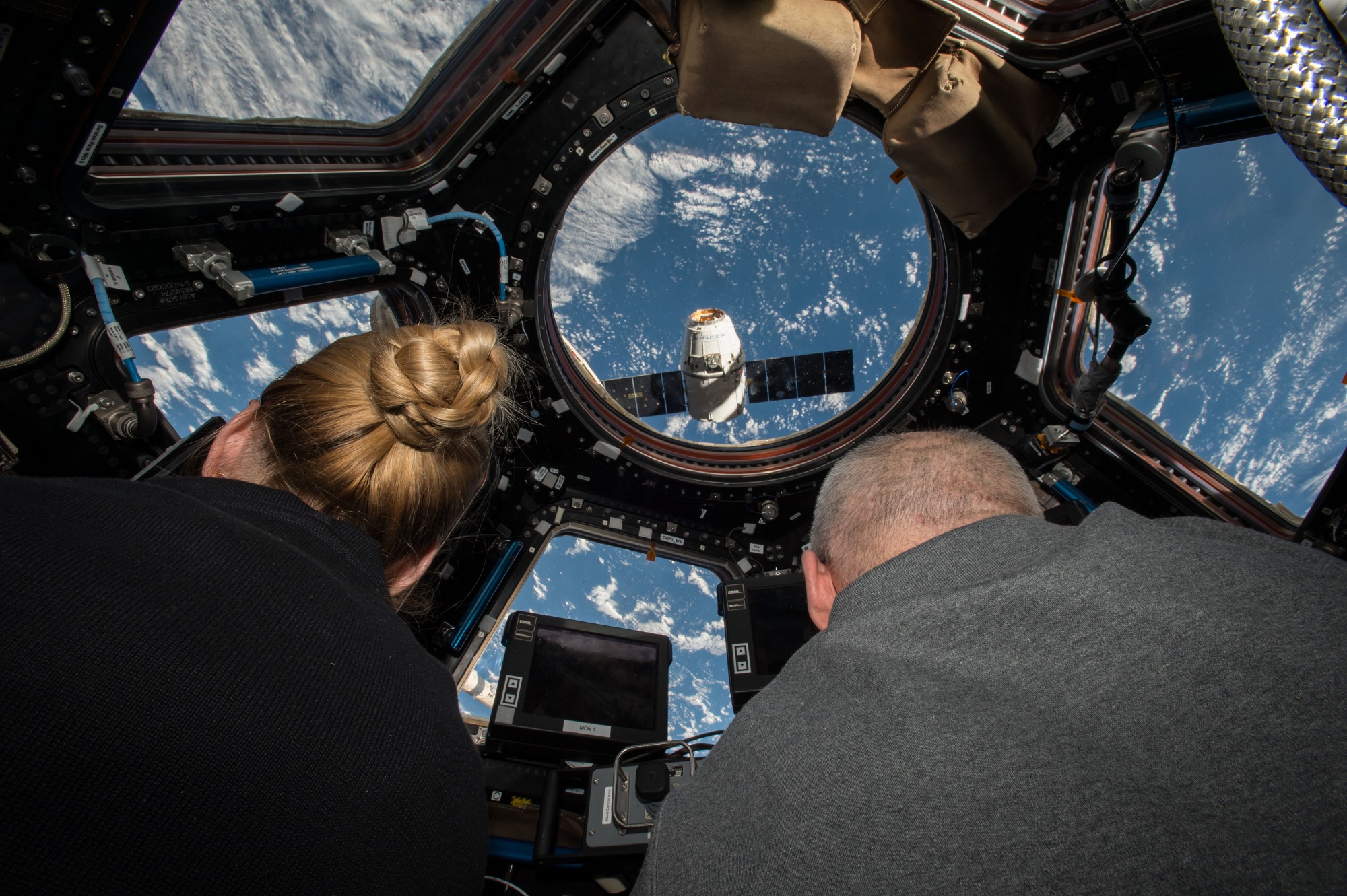
The ability to take part in long-term space missions is a rare privilege, usually enjoyed by only a handful of men and women within every generation. But that privilege comes with a pretty high price. In addition to all the hard work, training, and sacrifice that is needed to go into space, there are also the health effects of spending prolonged periods in a microgravity environment.
Until recently, the most well-document of these effects were muscle degeneration and loss of bone density. But thanks to a new study released by the Radiological Society of America, it is now understood how microgravity can impair eyesight. This is certainly good news for ISS crews, not to mention the astronauts who will be taking part in long-range missions to Mars and beyond in the near future.
For years, NASA and other space agencies have been seeking to understand how time in space can adversely affect eyesight. Nearly two-thirds of astronauts who have taken part in long-duration missions aboard the International Space Station (ISS) have been diagnosed with Visual Impairment Intracranial Pressure (VIIP) syndrome. Symptoms include blurred vision, flattening at the back of eyeballs, and inflammation of the head of the optic nerves.
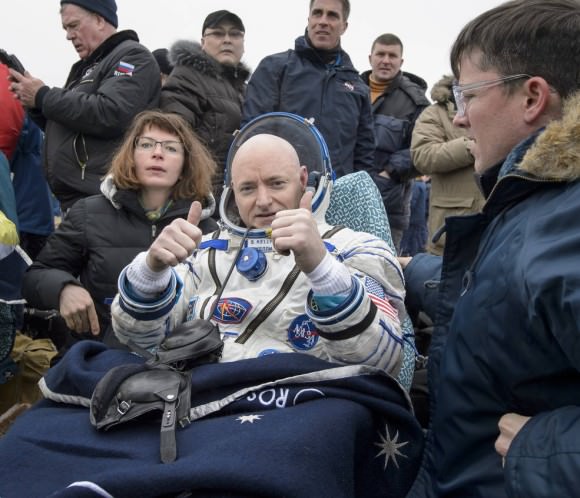
Previously, scientists believed that the primary source of VIIP was a shift of vascular fluid toward the upper body that takes place when astronauts spend time in the microgravity of space. But thanks to the new study, which was led by Dr. Noam Alperin and his team of researchers from the University of Miami, the cause of the syndrome has been properly diagnosed.
Dr. Alperin is a professor of radiology and biomedical engineering at the Miller School of Medicine at the University of Miami and the lead author of the study. According to the study he and his colleagues produced – which was presented on Monday, Nov. 28th, at the annual meeting of the Radiological Society of North America in Chicago – the culprit is cerebrospinal fluid (CSF).
This clear fluid is chiefly responsible for cushioning the brain and spinal cord, circulating nutrients and removing waste materials. At the same time, the CSF system is designed to accommodate significant changes in hydrostatic pressures, like when a person goes from lying down or sitting to a standing position. However, this system evolved within Earth’s own gravity environment, and exposing it to microgravity presents unique challenges.
As Dr. Alperin explained in a RSNA press statement, which coincided with the annual meeting:
“People initially didn’t know what to make of it, and by 2010 there was growing concern as it became apparent that some of the astronauts had severe structural changes that were not fully reversible upon return to Earth. On earth, the CSF system is built to accommodate these pressure changes, but in space the system is confused by the lack of the posture-related pressure changes.”
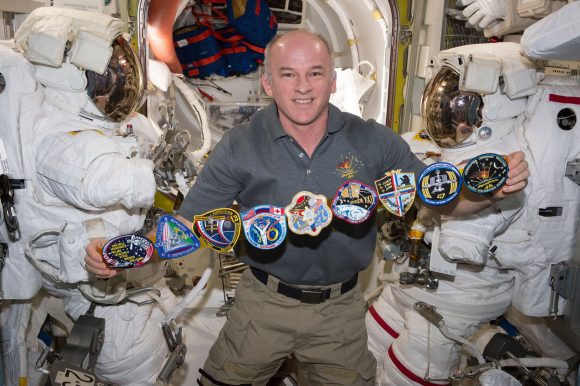
To arrive at this conclusion, Dr. Alperin and his colleague performed a series of before and after MRI scans on seven astronauts who took part in long-duration missions aboard the ISS. The results were compared against nine astronauts who took part in short-duration missions aboard the now-retired Space Shuttle. With the help of some special imaging algorithms, they looked for correlations between changes in CSF volumes and VIIP.
The results of their study Their study, titled “Role of Cerebrospinal Fluid in Spaceflight-Induced Visual Impairment and Ocular Changes“, showed that astronauts who participated in long-duration missions experienced a comparably higher flattening of their eyeballs and protrusions in their optic nerves. These astronauts also had significantly higher post-flight increases in CSF around their optic nerves and in the cavities of the brain where CSF is produced.
This study is both timely and significant, given the growing important of long-duration space missions. At present, it is expected that operations aboard the ISS will last for another decade. One of the most important activities there will be the study of the long-term effects of microgravity on human physiology, which will be intrinsic to preparing astronauts for missions to Mars and other long-range destinations.
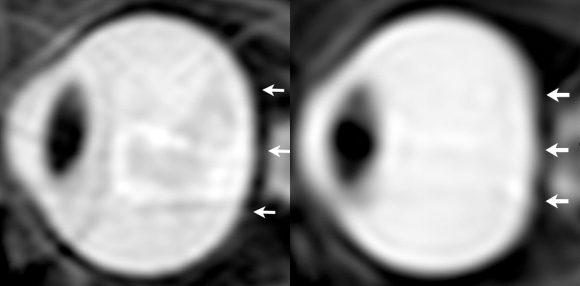
In short, identifying the origin of the space-induced ocular changes will help NASA and other space agencies to develop the proper countermeasures to protect the crew from potentially harmful changes to their eyesight. It will also come in handy for private space ventures that are hoping to send human beings on one-way trips to locations where the gravity is lower than on Earth (i.e. the Moon and Mars).
“The research provides, for the first time, quantitative evidence obtained from short- and long-duration astronauts pointing to the primary and direct role of the CSF in the globe deformations seen in astronauts with visual impairment syndrome,” said Alperin. If the ocular structural deformations are not identified early, astronauts could suffer irreversible damage. As the eye globe becomes more flattened, the astronauts become hyperopic, or far-sighted.”
As the old saying goes, “an ounce of prevention is worth a pound of cure”. In addition to having regiments that will help maintain their musculature and bone density, astronauts taking part in long-term missions in the future will also likely need to undergo treatments to ensure their eyesight doesn’t suffer.
Further Reading: RSNA

